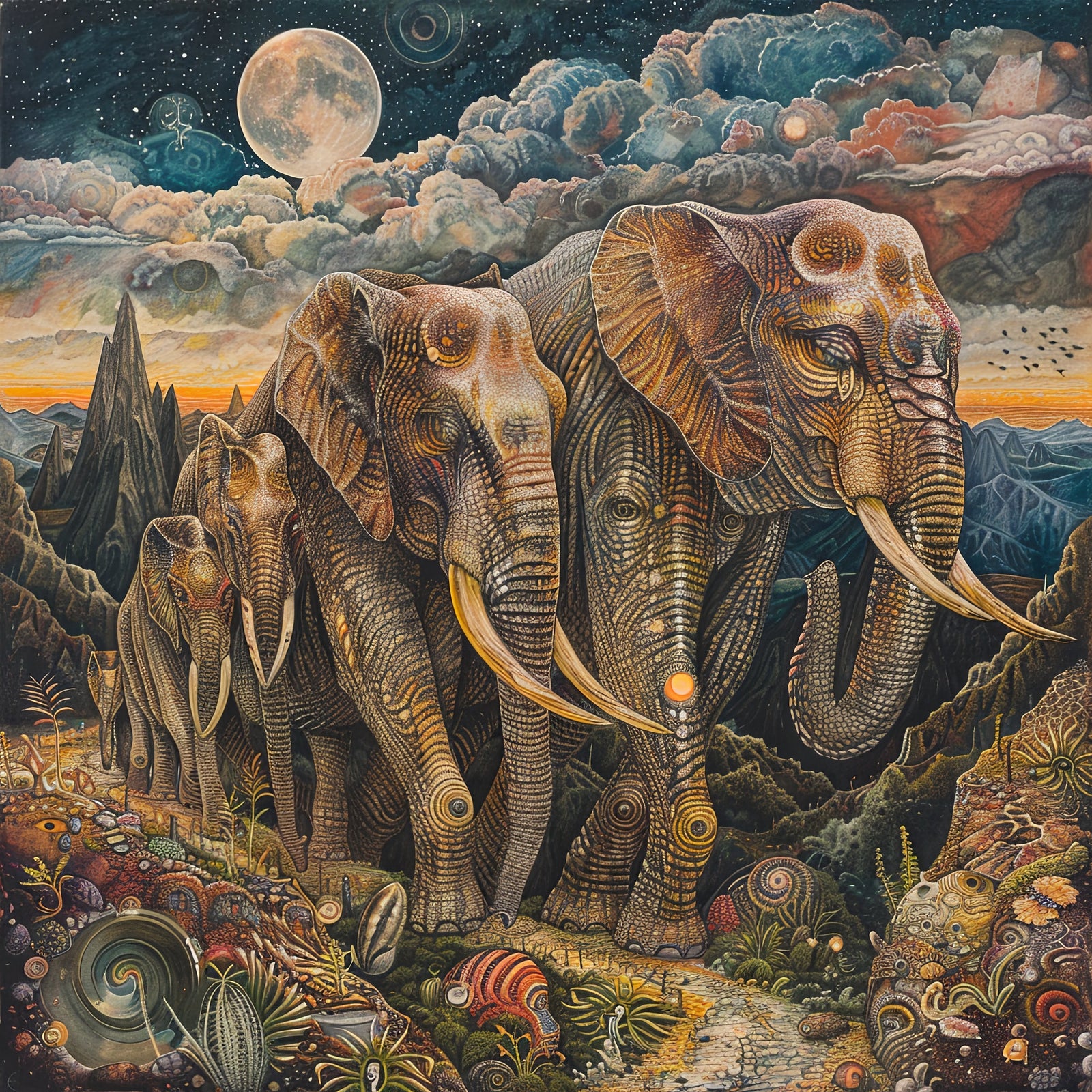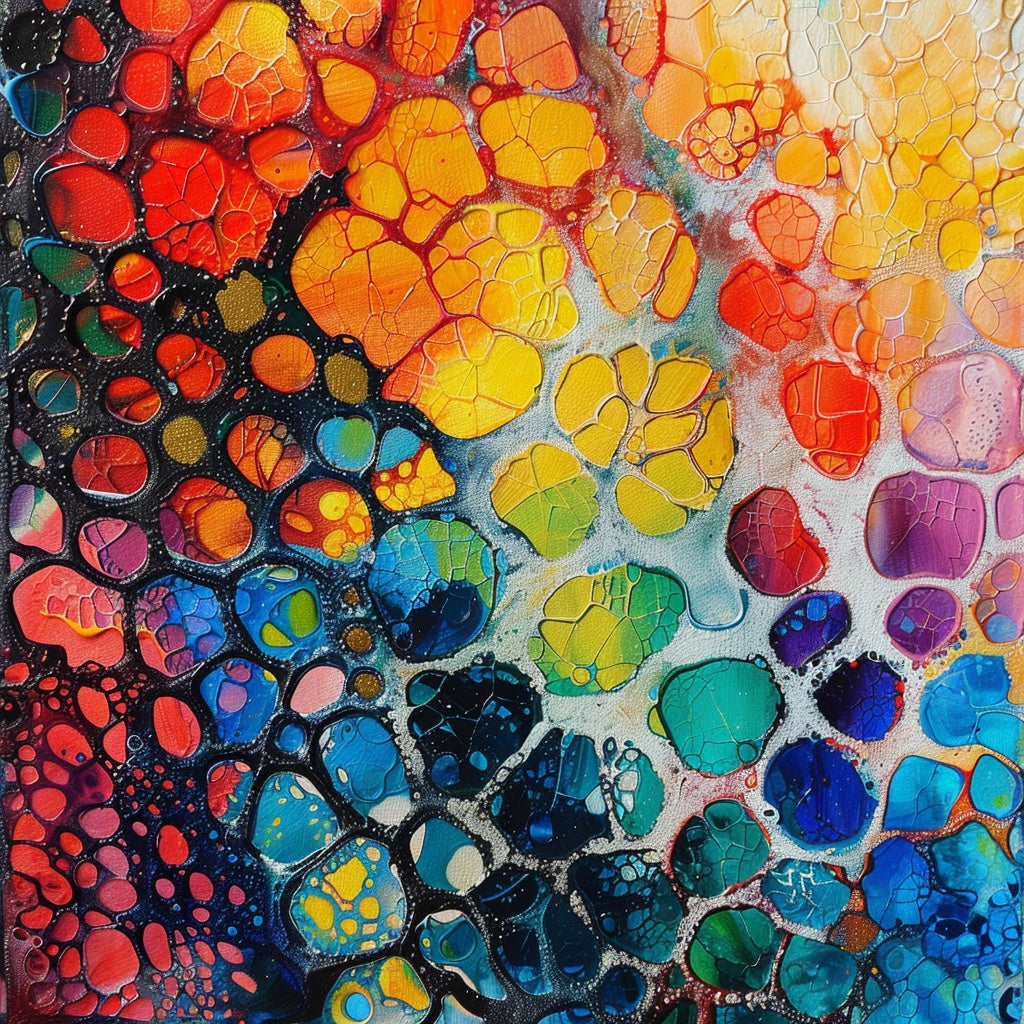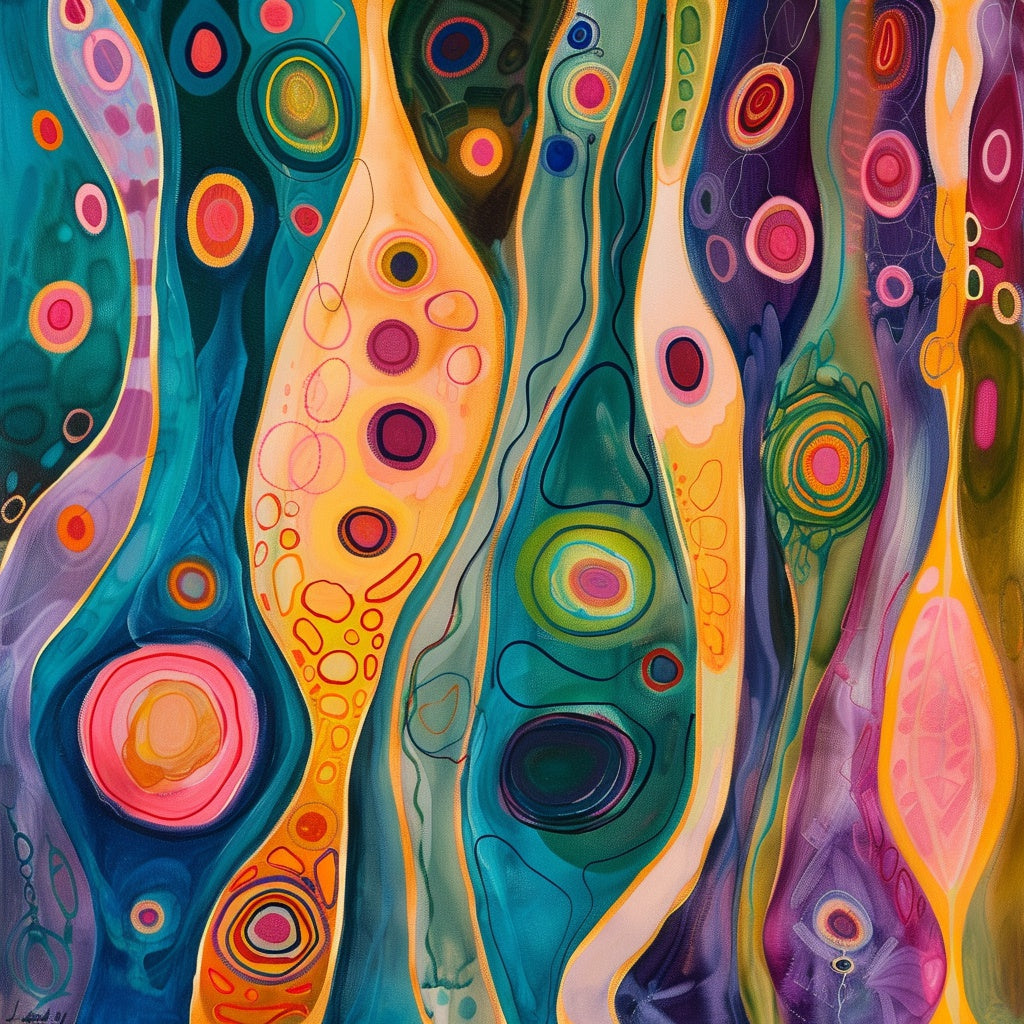The AI Art Revolution: A Beginner's Guide
The world of art is experiencing a profound transformation, driven by the rapid advancements in artificial intelligence. This blog post will guide you through the exciting realm of AI art, exploring its various forms, creation techniques, and the ethical considerations that accompany it. Whether you're an aspiring artist, a tech enthusiast, or simply curious about the intersection of art and technology, this comprehensive guide will provide you with a solid foundation to navigate the AI art landscape.
Table of Contents
- What is AI Art?
- How is AI Art Created?
- Different Types of AI Art
- Tools and Software for Creating AI Art
- Ethical Considerations Surrounding AI Art
- The Future of AI Art
What is AI Art?
AI art, or artificial intelligence art, refers to creative works produced with the help of artificial intelligence. This encompasses a wide range of artistic expressions, including images, music, and literature. AI art generators utilize complex algorithms and machine learning models to create unique and innovative pieces, opening up new avenues for artistic expression and challenging our traditional views of creativity. Imagine being able to create a picture simply by describing it – that's the potential of AI art! These tools interpret written descriptions using algorithms trained on vast amounts of images and text, allowing them to understand and respond to various requests.
AI art isn't just about creating visually appealing images. It can also be used to communicate **political, social, spiritual, religious, or philosophical ideas**, create records of specific events or people, explore the nature of perception, and even evoke strong emotions. It's a versatile tool that can serve a variety of purposes, making it a powerful and multifaceted art form.
How is AI Art Created?
AI art is typically created using two primary methods: **text-to-image AI generators and neural style transfer**.
Text-to-Image AI Generators
Text-to-image AI generators use a process called **text-to-image generation** to transform textual descriptions into visual representations. This allows users to create images from scratch based on user-defined prompts, making art creation more accessible. For example, you could type in "a cat wearing a hat in the style of Van Gogh," and the AI would generate an image based on that description.
To create AI art using text-to-image generators, you typically start by entering a descriptive text prompt that outlines your vision for the image. This prompt should include details about the subject, style, composition, and any other elements you want to incorporate. Once you've entered your prompt, the AI generator will process it and generate an image based on your description. You can then refine the image further by adjusting parameters or providing additional prompts.
These generators often use **diffusion models** and **Generative Adversarial Networks (GANs)**. Diffusion models, like Stable Diffusion and DALL·E 2, work by refining random noise into coherent images. GANs involve two neural networks – a generator and a discriminator – that compete against each other, leading to continuous improvement in the quality of the generated art.
Neural Style Transfer
**Neural style transfer** is a technique that combines the content of one image with the style of another, using convolutional neural networks. This allows artists to create unique artworks by applying the aesthetic of famous paintings to their own images. For example, you could upload a photo of yourself and apply the style of a Van Gogh painting to it.
To create AI art using neural style transfer, you typically need to provide two images: a content image and a style image. The content image is the image you want to transform, while the style image is the image whose style you want to apply. The AI algorithm then analyzes both images and generates a new image that combines the content of the first image with the style of the second.
The integration of AI in art creation extends beyond just these two methods, with AI being used in brainstorming and post-production to enhance workflow.
Different Types of AI Art
AI art can be categorized into various styles, each offering its own unique creative possibilities. Here are some of the most popular AI art styles:
- Photorealism: AI can generate images that are incredibly realistic and almost indistinguishable from photographs. This style aims to capture the details and nuances of the real world with stunning accuracy.
- Surrealism: AI can create dream-like and fantastical images that challenge our perceptions of reality. This style often features unexpected juxtapositions and bizarre imagery.
- Abstract Art: AI can generate abstract art with intricate patterns and unique visual elements. This style focuses on exploring form, color, and composition without necessarily representing recognizable objects or scenes.
- Traditional Art Styles: AI can mimic traditional art styles, such as Impressionism, Cubism, and Pointillism. This allows for the recreation of classic artistic aesthetics with a modern twist.
- Modern and Digital Art: AI can create art in various modern and digital art styles, including Pop Art, Digital Painting, and Glitch Art. This encompasses a wide range of contemporary aesthetics, from bold graphic designs to experimental digital manipulations.
- Sci-Fi and Fantasy: AI can generate images of futuristic worlds, fantastical creatures, and otherworldly landscapes. This style is perfect for creating imaginative and visionary artwork.
- Anime and Cartoon Styles: AI can create images in various anime and cartoon styles, including 2D and 3D animation. This allows for the generation of stylized characters and scenes with a distinct anime or cartoon aesthetic.
- AI Avatars: AI can be used to create personalized avatars, transforming characters, animals, and objects into anime-inspired figures.
- Coloring Books: AI can generate intricate and detailed images specifically designed for coloring books.
- Hybrid Organisms and Speculative Life Forms: AI can create imaginative images of hybrid organisms and speculative life forms, blurring the boundaries between the organic and the artificial.
AI art is not limited to these specific styles, and we can expect to see more diverse and innovative art forms emerge as the technology develops.
Tools and Software for Creating AI Art
A wide variety of tools and software are available for creating AI art, from free online platforms to professional-grade applications. Here are some of the most popular AI art generators:
| Tool Name | Developer/Company | Key Features | Pricing |
|---|---|---|---|
| DALL·E 2 | OpenAI | Creates realistic and creative images from text descriptions | Paid |
| Midjourney | Midjourney, Inc. | Known for high-quality results and user-friendly interface | Paid |
| Stable Diffusion | Stability AI | Open-source with a high degree of customization and control | Free and Paid options |
| Jasper Art | Jasper | User-friendly, well-suited for beginners, offers various styles and templates | Paid |
| NightCafe Creator | NightCafe Studio | Offers various AI art generation methods, including neural style transfer and text-to-image generation | Free and Paid options |
In addition to these tools, other AI art tools like Artbreeder, Deep Dream Generator, and Runway ML are also available. Each tool has its own strengths and weaknesses, so it is beneficial to experiment with different options to find what best fits your creative style.
AI isn't just for creating art from scratch; it can also enhance existing photos and videos. Tools like Topaz Labs and Remini use AI to improve image quality, resolution, and even restore old photos. AI is also being used in music, sound art, 3D modeling and robotics to create new avenues for artistic expression.
Ethical Considerations Surrounding AI Art
The rise of AI art has brought several ethical considerations that artists, developers, and society must address.
Copyright and Ownership
One of the most pressing ethical questions is about the copyright and ownership of AI-generated art. Who owns the copyright? Is it the user who created the prompt, the company that developed the AI model, or the AI itself? These questions are still being debated, and there is no clear consensus yet. This ambiguity poses challenges for artists and developers who want to use AI art commercially or protect their intellectual property.
Bias and Representation
AI models are trained on large datasets of images and text, and these datasets can reflect societal biases. This can lead to AI-generated art that perpetuates harmful stereotypes or excludes certain groups. It is crucial to ensure that training data is diverse and fair to promote inclusivity in AI art.
Job Displacement
As AI art generators become more sophisticated, there is a concern that they could eventually replace human artists. However, many argue that AI will likely augment human creativity rather than replace it entirely. The future likely lies in a collaborative approach where artists and AI work together, leveraging the strengths of both.
Authenticity and Originality
Can AI-generated art be considered truly original? Or is it simply a derivative of the data it was trained on? These questions challenge our understanding of creativity and the role of the artist. We need to re-evaluate our definitions of art and authorship in the context of this new creative landscape.
Data Poisoning and Manipulation
Another ethical concern arises from the potential for data poisoning and manipulation. Techniques to introduce unexpected behaviors into machine learning models during training have been developed. This can disrupt the AI art generation process or introduce malicious content. Additionally, tools like Glaze can add digital noise to images, making them unreadable by AI, potentially hindering the training of AI models.
Legal Challenges
AI art generators have also faced legal challenges due to ethical issues. Companies have been accused of exploiting artists by using their work to train AI models without proper consent or compensation. These legal battles highlight the need for clearer guidelines and regulations regarding the use of copyrighted material in AI art generation.
To navigate these ethical challenges, it's essential to adopt responsible and inclusive approaches to harnessing AI in art. This includes ensuring transparency in data usage, promoting diversity in training data, and respecting the rights and contributions of human artists. By fostering a collaborative and ethical environment, we can ensure that AI art benefits both artists and society.
The Future of AI Art
The future of AI art is full of possibilities. As AI technology advances, AI art generators will become more sophisticated and capable of creating realistic, creative, and diverse artworks. Some potential developments include:
- Increased Accessibility: AI art tools will become more user-friendly and accessible to a wider audience, allowing anyone to create art regardless of their technical skills.
- New Art Forms: AI will enable the creation of entirely new art forms that were previously unimaginable, pushing the boundaries of artistic expression.
- Enhanced Creativity: AI will become a powerful tool for artists, helping them to enhance their creativity and explore new ideas.
- Ethical Development: Artists and developers will work together to address ethical considerations, ensuring AI art is used responsibly.
- Personalized Art: AI will be used to create personalized art that adapts to individual preferences.
- Interactive Art: AI will be used to create interactive art installations that respond to viewer movements or inputs.
- Collaborative Art Creation: AI will be used to augment human creativity, leading to collaborative works between AI and human artists.
- NFTs and Digital Art Markets: AI-generated art is likely to play a significant role in the market for NFTs and digital art.
- Social Commentary: Artists will use AI-generated art to explore and comment on ethical issues surrounding AI.
- Education: AI art can serve as an innovative tool to teach art and design concepts.
- Commercial Applications: AI can be used to create unique, generative art pieces for commercial use.
The future of AI art is bright, with advancements in AI technology promising to revolutionize how we create, experience, and interact with art. By embracing these developments responsibly and ethically, we can unlock the full potential of AI art to enhance human creativity and enrich our cultural landscape.
In conclusion, AI art is a rapidly evolving field that is transforming the way we create and experience art. It has the potential to democratize art creation and generate entirely new art forms. As AI technology continues to advance, it's crucial to engage in ongoing discussions and develop responsible guidelines to ensure that AI art is used ethically and benefits society. This is just the beginning of the AI art revolution, so experiment with AI art tools and explore the diverse landscape of AI art. The future of art is here, and it's powered by AI.
Footnotes
Is AI-generated art actually art? - University of Plymouth
What Is AI-Generated Art? | IxDF - The Interaction Design Foundation
What is AI art & how does it work? - Adobe Firefly
AI Art Techniques to Know for AI and Art - Fiveable
How to Create AI Art: Your Ultimate Guide | Skillshare Blog
How to Make AI Art in 2025 (Detailed Tutorial) - Elegant Themes
AI, Art, and Creativity: Exploring the Artist's Perspective - Salzburg Global Seminar
Must-Try Art Styles for Generative AI in 2024 - Perfect Corp.
All creatives should know about the ethics of AI-generated images | Lummi
AI Image Ethical & Legal Issues - Artificial Intelligence and Images - Research Guides
AI Art: Exploring the Pros, Cons, and Ethical Dimensions - Vision Factory
The Ethical Implications of AI on Creative Professionals | by Dirk Steynberg - Medium
Embrace the Future: Exploring the Wonders of AI Painting - Lifestyle For Real Life -
AI-Generated Art: The Ethical Implications and Debates | by Samuel Shaibu
```


Leave a comment (all fields required)